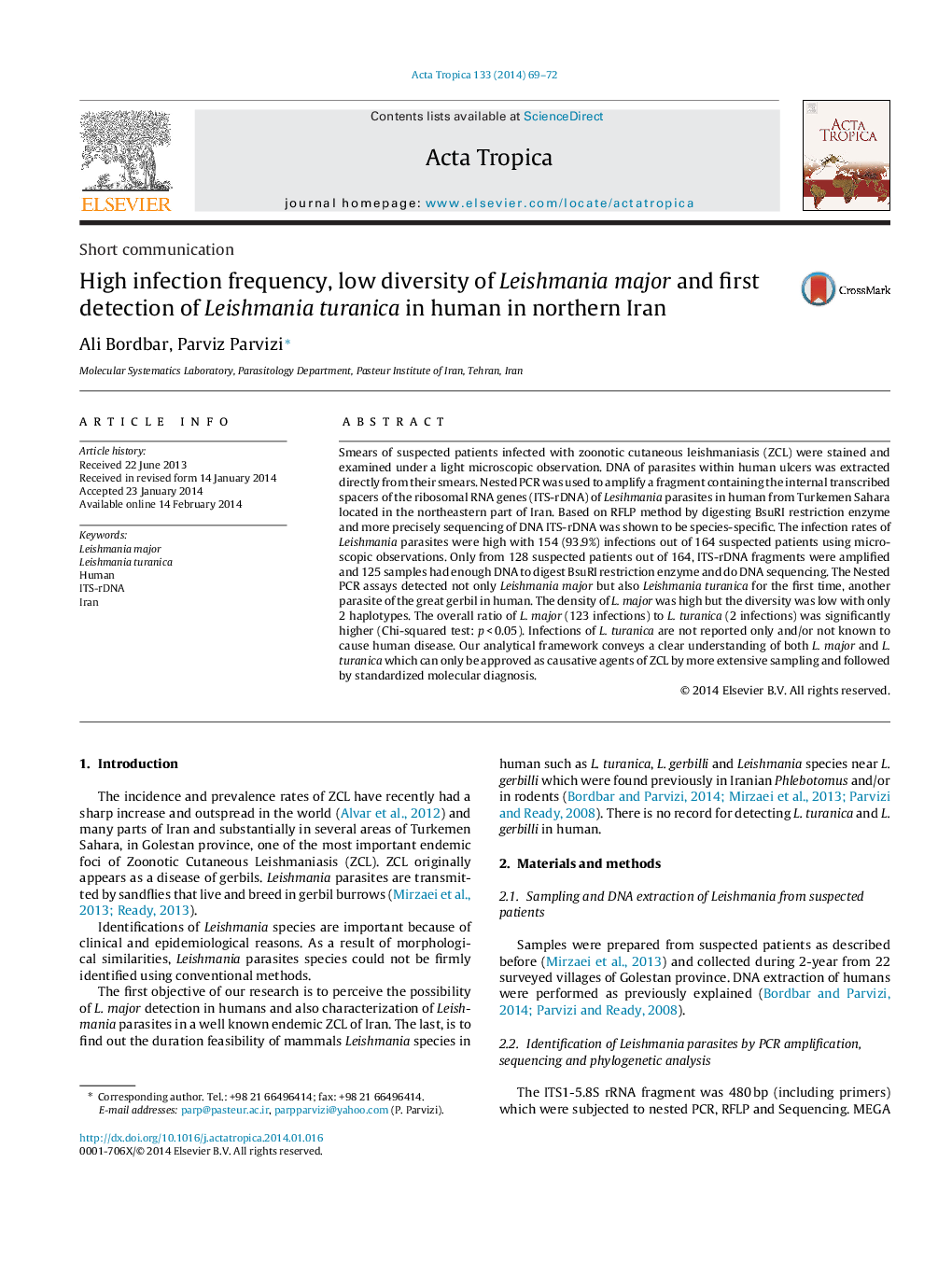| Article ID | Journal | Published Year | Pages | File Type |
|---|---|---|---|---|
| 6127436 | Acta Tropica | 2014 | 4 Pages |
Abstract
Smears of suspected patients infected with zoonotic cutaneous leishmaniasis (ZCL) were stained and examined under a light microscopic observation. DNA of parasites within human ulcers was extracted directly from their smears. Nested PCR was used to amplify a fragment containing the internal transcribed spacers of the ribosomal RNA genes (ITS-rDNA) of Lesihmania parasites in human from Turkemen Sahara located in the northeastern part of Iran. Based on RFLP method by digesting BsuRI restriction enzyme and more precisely sequencing of DNA ITS-rDNA was shown to be species-specific. The infection rates of Leishmania parasites were high with 154 (93.9%) infections out of 164 suspected patients using microscopic observations. Only from 128 suspected patients out of 164, ITS-rDNA fragments were amplified and 125 samples had enough DNA to digest BsuRI restriction enzyme and do DNA sequencing. The Nested PCR assays detected not only Leishmania major but also Leishmania turanica for the first time, another parasite of the great gerbil in human. The density of L. major was high but the diversity was low with only 2 haplotypes. The overall ratio of L. major (123 infections) to L. turanica (2 infections) was significantly higher (Chi-squared test: p < 0.05). Infections of L. turanica are not reported only and/or not known to cause human disease. Our analytical framework conveys a clear understanding of both L. major and L. turanica which can only be approved as causative agents of ZCL by more extensive sampling and followed by standardized molecular diagnosis.
Related Topics
Life Sciences
Immunology and Microbiology
Parasitology
Authors
Ali Bordbar, Parviz Parvizi,
